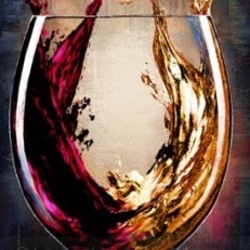Salin
Samuel Billaud
Montmains Chablis 1er Cru Chardonnay 2017

Château du Cèdre (Verhaeghe et Fils)
Le Cèdre Cahors Malbec 1998
Robe rubis fonce
Nez sanguin et fruit noir frais et salin
Bouche ample fraîche gourmande énergie folle finale fine ultra savoureuse épicée et longue
Bravo 👍👍👍 — 6 years ago
Meyer-Fonné
Kaefferkopf Grand Cru Riesling 2010
Grand riesling , droit , pur , tendu , salin et pas austère il y a encore du fruit qui porte le début de bouche ... millesime 2010 — 8 years ago
Domaines Schlumberger
Saering Alsace Grand Cru Riesling
Fresh, white fruit, flint stone, bien long et bien salin! — 9 years ago
Domaine Hatzimichalis
Cabernet Sauvignon 2008
Un Cabernet Sauvignon qui vous surprendra... Le sol... L'air salin des îles grecques???
Laissez respirer une grosse heure et plus...
14.20€ — 11 years ago
Domaine des Lambrays
Les Folatières Puligny-Montrachet 1er Cru Chardonnay 2009
Grand vin, mûr, racé, bel élevage, élégant, plaisant, accessible, joyeux, salin : miam — 12 years ago
Ardbeg
Uigeadail The Ultimate Islay Single Malt Scotch Whiskey 54.2% abv.
Explosif, salin, massif et en finesse! — 12 years ago
L'Ancienne Mercerie
Couture Faugères 2011
Confituré mais côté salin bacon tapenade - structure équilibre salivité — 12 years ago
Eric Rodez
Blanc de Blancs Champagne Ambonnay Grand Cru Chardonnay
Frais et franc, fin et structuré, comme des odeurs de roches chauffées au soleil, presque salin. #ChampagneAtable Un Champagne que j'aime dans la brise et le silence. A la perfection seul à l'apéritif ou pourquoi pas sur des huîtres. (Issu d'un grand cru connu pour son pinot noir mais une parcelle de chardonnay. Pourquoi pas à carafes) — 12 years ago
Domaine Bachelet-Monnot
Les Referts Puligny-Montrachet 1er Cru Chardonnay 2016
Slight reduction but very elegant and classy nose of white orchard fruit and some floral tones, wet stones and a lot of minerality that also that carries over on the palate, crisp and elegant, with great Puligny backbone, delicious and long mouth watering finish. Always a great wine made by the two Bachelet brothers. 92-93
Un peu réduit au nez mais très élégant et racé avec des notes florales et de fruits du verger blancs, un côté salin et minéral qui se transpose en bouche aussi. Belle structure et colonne de Puligny avec cette acidité racée et noble, avec une longueur minérale, savoureuse et salivante, une autre belle réussite des frères Bachelet. — 5 years ago
Domaine François Cotat
La Grande Côte Sancerre Sauvignon Blanc 2008
Jaune cristallin
Nez buis feuille de cassis
Bouche mûre épaisse dense mais avec une belle fraîcheur et un côté salin et minéral notes d orgeats et anis — 6 years ago
Franck Balthazar
Chaillot Cornas Syrah 2014
Robe noire
Fruits noirs terre humide réglisse et fumée
Bouche acide en attaque puis note de viande et olive et côté salin
Bel équilibre 💪🏻 — 6 years ago
Guilhem et Jean Hugues Goisot
Bourgogne Aligoté 2015
Une des meilleures choses que j’ai bu en 2018! Salin, différent des autres aligoté, wow — 7 years ago
Château Lafite Rothschild
Carruades de Lafite Pauillac Red Bordeaux Blend 2003
On the nose, ripe; blackberries, sweet & sour dark cherries, cooked cherries & strawberries & hues of blueberries. Black tea, cola, soft baking spices; vanilla, light clove & cinnamon. Crushed rocks, stones, limestone, turned, moist black earth, tobacco leaf, saddle-wood, soft leather, dry & fresh dark red florals.
The body is medium edging toward full. The tannins pretty well resolved. The ripe fruits show the hot, ripe vintage. Blackberries, sweet & sour dark cherries, cooked cherries & strawberries & hues of blueberries black tea, cola, soft baking spices; vanilla, light clove & cinnamon. Crushed rocks, stones, limestone, tobacco with ash, some graphite, soft medium dark spice, turned, forest floor, powdery but edgy minerals, saddle-wood, soft leather, dry & fresh dark red florals with some violets on the finish.
This showed better with Ribeye. The Ribeye brought out a fuller, richer wine with even more complexity. 9.35-9.4 with the Ribeye. It just missed 9.2 on its own. It’s big brother the 03 “Lafite” is 💯 point Parker wine.
Photos of; Chateau Lafite, their oak vat fermenters, Estate wine and their magnificent barrel room.
Interesting history and producers notes...Lafite Rothschild has a long and interesting history dating back to 1234, even though the property was not in the Bordeaux wine business at that time.
It is has been largely believed that vines were already planted on their terroir. The owner of the estate at the time, Gombaud de Lafite left his mark, his name. Almost 1,000 years after he owned it, the Chateau is still named after him! The vines were probably in existence at Lafite for over a century, it was not until around 1680, the majority of vineyards of what we know of as Lafite Rothschild today were created. This is because on the 1680 estate manifest, there are six mentions of their Bordeaux vineyards. Jacques de Segur, earns credit for cultivating the vineyard as I wrote in my Colon Segur post last weekend. In 1695, Alexandre de Segur married Marie-Therese de Clauzel, heiress to Chateau Latour. So to dovetail that write up, within a generation, the Segur family married into two of the greatest Bordeaux vineyards, Chateau Lafite and Chateau Latour! When their son, Nicolas-Alexandre passed away, Chateau Lafite and Chateau Latour were separated.
In 1797, Chateau Lafite was sold again. In the deed of sale, Chateau Lafite was described as a Premier Cru of Medoc. This is one of the earliest mentions of what we know of today as Lafite Rothschild producing wines of what would later be classified as an 1855 First Growth.
At that time, of Lafite were managed by the Goudal family. The Goudal family were wine historians and were able to read accurate records and details of the viticulture and marketing plans for Chateau Lafite in the estates formative years. The Goudal family gets the credit for creating the cellar and saving many of the oldest bottles that remain in the cold, dark cellars, including their oldest bottle, the 1797 Lafite!
The start of the famous Rothschild family begins in 1744, with the birth of Amschel Meyer. Amschel Meyer began creating his fortune while working as a merchant at “Zum Roten Schild,” which eventually became the family name of Rothschild.
In 1798 his sons were sent to various cities to create their fortunes. Needless to say, his sons all prospered as did their children in turn. This eventually led to them wanting to own a Chateau in Bordeaux. So in 1853, Baron Nathaniel de Rothschild, an English member of the Rothschild family, purchased Chateau Brane-Mouton. As was the custom of the day, the new owner renamed it using his name and Chateau Mouton Rothschild was born.
This was followed in 1868, when James Rothschild, another member of the family purchased Chateau Lafite, which was now a coveted First Growth.
On 8 August, 1868, Baron James d’Rothschild purchased Chateau Lafite, which was sold at a public auction in Paris. It’s assumed, he bought the property for family competitive reasons looking to one up his brother, the owner of Mouton Rothschild. At that time, Mouton Rothschild was only a Second Growth at the time. But, that does not paint the entire picture. The 1855 Classification had not taken on the importance associated with it the we see it today. Plus, buying Lafite was a reasonable investment as the vineyard sold for about 8 times its earning potential.
The actual Chateau is one of the older structures in Bordeaux, as part of the building dates back to the later part of the 16th century. In 1868, the vineyard took up 135 hectares, of which 74 hectares were cultivated with vines. Production was much smaller in those days than it is today as it was between 4,000 and 5,000 cases.
Just three months after the purchase, Baron James d’Rothschild passed away and Chateau Lafite Rothschild became the joint property of his three sons; Alphonse Rothschild, Gustave Rothschild & Edmond Rothschild. Since 1868, Chateau Lafite Rothschild has remained in the hands of the of Rothschild family. The new owners renamed the estate Chateau Lafite Rothschild.
Jumping ahead to the modern age, in 1962, the Rothschild family added to their holdings when they purchased Chateau Duhart-Milon, a Fourth Growth vineyard also located in Pauillac. It was owned by the Casteja family for more than a century, Chateau Duhart Milon suffered from neglect and was in a awful condition. By the time Duhart Milon was obtained by the Rothschild family, the vineyard was down to only 17 hectare which required extensive renovations.
Baron Eric Rothschild, nephew of Baron Elie Rothschild, took over the management of Lafite Rothschild in 1974. Baron Eric Rothschild was part of the fifth Rothschild generation to inherit Chateau Lafite Rothschild. In 1984, the Rothschild family added to their holdings in Bordeaux with the purchase of Chateau Rieussec in Sauternes.
1987 was a difficult vintage, but because that was the year Lafite celebrated the inauguration of their wine new cellar, they had a lot to be excited about.
The new cellars were built under the supervision of Catalan architect Ricartdo Bofill, is both underground and circular, with a vault supported by 16 columns, giving the structure a majestic architectural style. The cellar holds 2,200 barrels, which is about 55,000 cases of wine. The construction took two years to finish and was completed in 1988.
Domaines Baron Rothschild became one of the first Bordeaux properties to invest in South America when they purchased Vina Los Vascos from a Chilean family. The owners of Lafite Rothschild continued expanding their holdings with the purchase of Chateau lEvangile in Pomerol from the Ducasse family, who owned the property for almost 100 years.
The wine making at Chateau Lafite Rothschild was managed by Charles Chevallier, who began his position in 1994. Charles Chevallier was replaced by Eric Kohler in January 2016. 2017 saw another change at the estate when Jean Guillaume Prats replaced Christopher Salin as the President of Domaines Baron Rothschild.
Perhaps, it’s the most refined of the First Growth. The wine, like all First Growth’s takes decades to mature. It has remarkable staying powers. Bottles of 1870 Lafite Rothschild discovered in the Glamis castle remain profound at more than 140 years of age! It is consider by many Master Sommeliers to be the best wine in the world.
Chateau Lafite Rothschild is one of the earliest major Bordeaux estates to bottle their own wine. In 1890, they bottled a large portion of the wine and again in 1906. Part of the estate bottling was due to requests from Negociants who were willing to pay more for Chateau bottled wines. Also, bottling was primarily done to combat piracy. At the time, it was known that merchants in some countries, like Russia were bottling cheap wine and placing labels from Lafite Rothschild on the bottles. The Koch’s famous Jefferson bottles were not the first attempt at counterfeiting.
Prior to 1996, some would say the property had its share of ups and downs. The 1960’s and 1970’s were not great for Chateau Lafite Rothschild. But since 1996, Lafite Rothschild has been producing some of the best wine in their history!
Sadly, only the wealthy can afford to purchase it. Price aside, there is no denying the level of quality. In 2003 Lafite Rothschild produced a wine that is possibly unequaled by the estate at any time in their long history. Hence, my purchase of their 03 second wine. 2009, 2010 and 2016 are not far behind.
Starting in about 2008, Lafite Rothschild became the most collectible wine from Bordeaux. Prices exploded due to demand from China as Chinese businessmen bought them as gifts or bribes depending on you look at it.
The reason this started was Lafite Rothschild paid for product placement on the number one rated Chinese soap opera on television. Characters in that show were pictured enjoying life with Lafite Rothschild and since then demand went through the roof as did priced.
However, Issac Newton had it right when he declared “What goes up, must come down.” Prices for Lafite Rothschild plummeted after 2011. By the difficult 2013, prices were finally starting to hold firm, but many of the vintages that were setting price records on a daily basis had lost close to 50% of their value.
Starting with the 2012 vintage, Chateau Lafite Rothschild began instituting anti-counterfeiting measures. From 2012 forward, to help fight, rampant counterfeiting, the estate places a seal of authenticity on the capsules of both Lafite Rothschild and Carruades de Lafite. The seal features a unique, numbered code that can be checked on their website, to verify if the wine is real.
The 112 hectare vineyard of Chateau Lafite Rothschild is planted to 70% Cabernet Sauvignon, 25% Merlot, 3% Cabernet Franc and 2% Petit Verdot. This shows a slight change in the vineyard.
While Cabernet Sauvignon remained at 70%, today there is slightly more Merlot, less Cabernet Franc and the Petit Verdot has been added since the mid 1990’s.
Located in the far north of the Pauillac appellation, only the small, Jalle de Breuil stream separates the vineyards from St. Estephe. You could divide the vineyards of Chateau Lafite Rothschild into three sections with 100 separate parcels in all. The estate has close to 50 hectares of vines located close to the Chateau, on both sides of the D2, which offers gentle rises in elevations of up to 27 meters. They also have about 50 hectares vines planted on the plateau in the Carruades sector, where they have two blocks of vines, one of which is inside the vineyard of Chateau Mouton Rothschild. It is interesting to note that even though the parcels in the Carruades sector give their name to the second wine of the estate, those vines are almost always placed in the Grand Vin.
There are also vines adjacent to, and interspersed with the vineyards of Chateau Duhart Milon. The property also consists of a smaller, 4.5 hectare parcel of vines located in the Saint Estephe appellation, “La Caillava”. The vines in St. Estephe are situated not that far from Cos d Estournel, which are located on a larger a parcel known as Blanquet. The vines in Saint Estephe are allowed to be placed into the wine of Chateau Lafite Rothschild because those vines were used to produce Lafite in 1885, at the time of the classification. The vineyards are close to their famous neighbor Mouton Rothschild.
Located just south of the Chateau, the best terroir of Lafite Rothschild has a thick layer of gravel with sand, clay, marl and limestone in the soils with rolling, gravel slopes. The gravel can be as deep as 4 meters in some parcels.
It is important to note that even though their vineyards are in the far north of Pauillac, most of the soil is pure gravel, rocks and stones. With more than 50% of the soil consisting of gravel, that is a large part of the reason Lafite Rothschild has such elegant, feminine textures and that coveted sensation of minerality.
On average, the vines are close to 40 years of age. However, Chateau Lafite Rothschild has much older vines. In fact, they have some vines that are more than 100 years of age planted in the La Graviere section. That small parcel of Merlot vines dates back to 1886. Less than 1% of the vines are that old.
Additionally, they have a small section of Cabernet Sauvignon that dates back to 1922! Other old vines range from 50 to 90 years of age! They also maintain some of the oldest Petit Verdot vines in the Medoc that was planted in the early 1930’s.
At Chateau Lafite Rothschild, between 1% to 1.5% of the vineyard is replanted every year. Vines less than 20 years of age are never included in the Grand Vin.
The vineyard of Chateau Lafite Rothschild is planted to a vine density that ranges from 7,500 to 8,500 vines per hectare. Only organic fertilizers are used in the vineyards of Lafite Rothschild.
During harvest, the goal is not to pick at the maximum level of ripeness. Instead, they are seeking a blend of grapes at differing levels of maturity, which gives the wine its unique textures, freshness, aromatic complexities and elegant sensations.
Lafite Rothschild is the largest of the First Growth vineyards with close to 112 hectares of vines. A large portion of the estate is taken up with stunningly, beautiful landscaping, lakes, trees and parkland.
At one point in time, Chateau Lafite Rothschild produced a dry white, Bordeaux wine that was sold as Vin de Chateau Lafite. The wine was produced from a large percentage of Semillon, blended with a small amount of Sauvignon Blanc. The last vintage for their white wine was 1960. The wine was sold as a generic AOC Bordeaux blanc with a simple, scripted label, black and white label.
Lafite vinification takes place in 66 vats that are a combination of 29 wood vats, 20 stainless steel tanks and 17 concrete vats that range in size from as small as 45 hectoliters up to 123 hectoliters in the concrete and as large as 270 hectoliters for the wood. The wide range of vat sizes coupled with different materials allow Chateau Lafite Rothschild to vinify depending on the needs of each specific parcel and grape variety. The stainless steel tanks and oak vats are used for Cabernet Sauvignon. The Merlot is vinified in the concrete tanks. Malolactic fermentation occurs in smaller, stainless steel tanks that vary in size from 25 hectoliters up to 60 hectoliters. At this point, Chateau Lafite Rothschild does not yet use gravity to move the fruit and juice in the cellar. It’s a good bet that a remodel is coming soon.
The average annual production of Chateau Lafite Rothschild ranges from 15,000 to 20,000 cases of wine per year, depending on the vintage. They of course make this second wine, Carruades de Lafite, which due to the name and association with the Grand Cru, has also become extremely collectible. Carruades de Lafite takes its name from a specific section of their vineyard that is located near Mouton Rothschild. Carruades is actually one of the older second wines in Bordeaux, as it was first produced in the mid 1850’s. About 100 years later during the mid 1960s, the estate reintroduced their second wine naming it Moulin de Carruades. The name was changed again in the 1980’s to Carruades de Lafite.
There is also a third wine which is sold as an AOC Pauillac that is produced from declassified fruit from Lafite Rothschild and Duhart-Milon.
The blend for Chateau Lafite Rothschild changes with each vintage depending on the character and quality of the vintage. Generally speaking, the amount of Cabernet Sauvignon in the blend ranges from 80% to 95%. Merlot is usually 5% to 20%. Cabernet Franc and Petit Verdot usually varies from 0 to 5%.
— 7 years ago

Jean-Paul & Benoît Droin
Valmur Chablis Grand Cru Chardonnay 2016
A beautiful nose of yellow orchard fruit, honeysuckle and a touch of sea shells and salin texture. The wine is rich, a nice roundness and slightly less crisp than the usual Droin style, but still with enough backbone and acidity to make it harmonious, balanced, classy, elegant and with a lingering delicious finish. Great bottle. Un nez magnifique sur les fruits jaunes, pêches et un petit côté chèvrefeuille et une touche de coquillage. La bouche est sur le même registre, un côté plus riche et ample que le style Droin habituel, mais non dénuée de colonne et d’acidité qui en font un ensemble harmonieux, frais, pur, équilibré et avec beaucoup de classe et une longueur impressionnante. 93 pts aisément — 5 years ago
Domaine Paul Cherrier
Sancerre Sauvignon Blanc 2014
Salin, peu boisée, agrumes, délicieux — 6 years ago
Les Vignes de Paradis
Un Matin Face Au lac Terroir Du Léman Pays d'Allobrogie Chasselas Blend 2012
Jaune claire
Nez frais et cristallin
Bouchon plus ronde en attaque mais sans aucun boisé apportant un côté salin et désaltérant
Longueur moyenne — 6 years ago
Marco De Bartoli
Lucido Catarratto
Mineral, noyaux de pêches, presque salin! 10/10 — 7 years ago
Domaine de Vaccelli
Ajaccio Blanc Vermintinu 2015
Superbe bouteille, beau volume , frais et salin. ! — 7 years ago
Egly-Ouriet
Cuvée des Grands Côtés Grand Cru Vieilles Vignes Coteaux Champenois Ambonnay Pinot Noir 2013
2013, nez superbe, poudré, moins concentré que les millesimes précédant mais plus en nuance et délicatesse. Sa robe et ses reflets témoignent bien son origine Champenoise, assez fluide et clair. Bouche de velour, finale longue, très longue. Presque salin assurément crayeux. Grand moment — 8 years ago
Domaine des Sablonettes
Le P'tit Blanc Anjou Chenin Blanc
2015 au nez c'est très expressif, un mélange entre un côté miel et salin. Une vivacité en bouche et tenace. C'est top, jeune et long, très long. — 9 years ago
Domaine Ostertag
Heissenberg Alsace AOC Riesling 2014
Nez marin... Salin, minéral, iodé presque. Bouche assez longue. On sent qu'il peut vieillir un bon moment encore — 9 years ago
Château de Cazeneuve
Coteaux du Languedoc White Blend 2011
Salin, pear william, wood, lemon, ecalipyus, honey wax, acid — 12 years ago
Domaine des Collines
Bordeaux Supérieur 2009
Warm, wood, cherry, pepper; paprika, blackberry, cassis; acid, cherry, light tight melted tannins, salin — 12 years ago
Château Mayne d'Eyquem
Graves Red Bordeaux Blend 2011
Light, strawberry, raspberry, cassis; rose, light pepper, alcohol; light, soft tannins, lightly sour, lightly salin — 12 years ago
Domaine Jamet
Côte-Rôtie Syrah 1996
Nez : Café - violette - torréfié - salin - bacon (animal) - super complexe au nez miel? Bouche: Floral/végétal Souple - poivre noir - poivre blanc - pointe d acidité mâche soyeux tannin droit apporte vraiment un côté super droit au vin on sent la colonne vertébrale du vin entre la balance tanin et la final acide qui fait saliver avec le côté salin — 13 years ago












Mario Vaillancourt
Now that’s Chardonnay!! Typical Chablis aromatics with this salinity, gun powder, sea shells aromas, fresh and so enjoyable. The palate is of the same breed, it is so nicely chiseled and balanced in this generous 2017 vintage. Some chalky and mineral character, fresh, decent length, superb Chablis first growth. 90-91
Nez Chablisien avec ce côté pierre à fusil et salin, agréable et frais tout en ayant des notes de Chardonnay. La bouche est magnifiquement ciselée avec un bel équilibre sur ce millésime généreux, un côté crayeux, salin et minéral, assez bonne longueur, superbe Chablis. 90-91 — 5 years ago